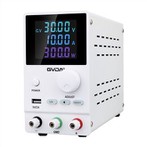Causes and Solutions for Why the Soldering Iron Does Not Stick to the Tin
When using an electric soldering iron for welding operations, it is often encountered that the soldering iron tip does not stick to tin. If the soldering iron tip does not stick to tin, the soldering operation cannot be performed. Frequent replacement of the soldering iron tip is also a big expense if it is not used properly. In this case, in addition to the quality problems of the soldering iron tip itself, below I will give a detailed explanation of the reasons why the soldering iron tip does not stick to tin and how to repair it:
■The reason why the soldering iron tip does not stick to tin
1. Most soldering iron tips are made of copper. Copper reacts with oxygen in the air at high temperatures to form black copper oxide (CuO), and copper oxide does not stick to tin.
2. If the temperature is too high, the tin attached to the surface of the soldering iron head will quickly melt and volatilize, causing violent oxidation. High temperatures require more tin.
3. Using incorrect or defective cleaning methods.
4. Use impure solder or the flux in the soldering wire is interrupted.
5. The working temperature exceeds 350°C, and the welding is stopped for more than 1 hour, and the amount of tin on the soldering iron tip is too small.
6. "Dry burning" of the soldering iron tip, for example: the soldering station is left open and not used, but the surface of the soldering iron tip is not tinned.
7. The flux used is highly corrosive, causing rapid oxidation of the soldering iron tip.
8. The oxide on the soldering iron tip is not cleaned regularly.
■How to deal with soldering iron tip without tin sticking
1. Caused by surface oxidation. First, heat the soldering iron and rub it repeatedly in rosin to remove the oxide scale, and then dip it in solder.
2. How to "burn" the soldering iron tip: Apply electricity to heat the soldering iron to normal temperature, then use a file or sandpaper to remove the black copper oxide on the surface of the soldering iron tip, then immediately dip it in rosin, and then hang the tin.
3. It is recommended to use a cleaning sponge and a soldering iron tip cleaner.
4. Guarantee the quality of tin
5. It is recommended to add tin for protection when not in use.
6. It will cause rapid oxidation of the soldering iron tip.
7. Choose a good flux. It is recommended to use neutral active flux.
8. Wash the soldering iron tip more often
The outer layer of the soldering iron tip is covered with a metal layer that has an affinity with the solder melt, which is the so-called long-life soldering iron tip. Therefore, you must not use tools such as files to remove the surface oxide layer. If you file off the outer layer of metal, , the soldering iron tip will never be stained with solder and will be scrapped. It can only be replaced with a new one before it can continue to be used.
The soldering iron should be placed on the soldering iron stand with the soldering iron head facing down so that the heat will not be concentrated on the soldering iron head, thus extending the service life of the soldering iron head.
A rectifier diode and a switch are connected in parallel and in series to the power cord of the electric soldering iron to make a device that turns off the switch during the working gap. This will not cause the soldering iron to cool down, but can keep the soldering iron tip in a In the heat preservation state, turn the switch on when soldering again, then the soldering iron can work normally, ensuring that the soldering iron tip will not burn out.






